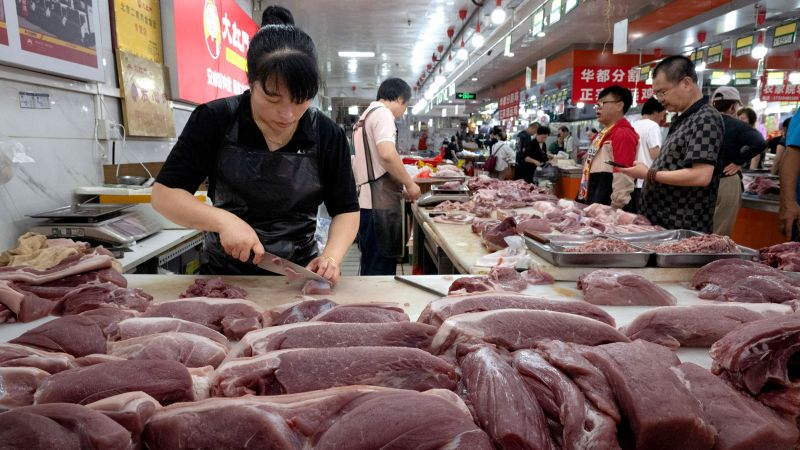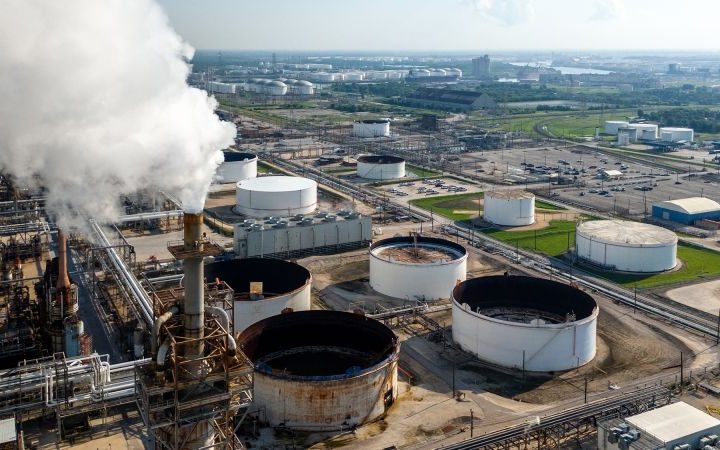Editor’s Note: Sign up for CNN’s Meanwhile in China newsletter which explores what you need to know about the country’s rise and how it impacts the world.
Consumer prices in China fell more than expected last month, sliding the country back into deflation and renewing concerns about the strength of the world’s second largest economy.
The country’s National Bureau of Statistics (NBS) said Thursday that the consumer price index (CPI) edged down 0.2% in October compared to the same month a year ago. The decline exceeded the 0.1% fall forecast by a Reuters poll of analysts.
The drop was mainly attributed to falling food prices, particularly pork, which has been sliding for months and is down 30% compared to a year ago, according to Goldman Sachs analysts.
Pork prices have been under pressure as increased supply of the meat has outstripped demand. As China’s most consumed meat, pork has an outsized weighting in the consumer price index.
Core inflation, which strips away the traditionally volatile categories of fresh food and energy, fell even more sharply in October, by 0.6%.
Economists say that’s bad news, because it reflects low consumer demand in general. The new data adds to “evidence of renewed economic weakness,” Capital Economics wrote in a note to clients Thursday.
Robert Carnell, regional head of research for Asia Pacific at ING, disputed the notion that China’s economy was suffering from deflation, which economists define as a sustained and broad decline in general price levels for goods and services over a period of time.
He said deflation was a “pernicious” situation characterized by a decline in consumer prices as well as the prices of assets and wages, leading to a sharp slowdown in economic activity.
“What China has right now, is a low rate of underlying inflation, which reflects the fact that domestic demand is fairly weak,” he wrote in a Thursday report.
China briefly slipped into deflation in July, with CPI falling by 0.3%. But consumer prices recovered in August.
The country is grappling with an uneven economic recovery as it battles a series of challenges, including an ailing property market and heightened reluctance among some businesses and consumers to invest or spend.
Poor sentiment is on display at the world’s biggest annual shopping festival, Singles Day. This year, the weeks-long retail blowout, which officially starts on November 11, has forced e-commerce players to offer eye-popping discounts in a bid to entice shoppers to open up their wallets.
Chinese suppliers of goods are facing challenges, too. The producer price index, which measures the prices of goods at the factory gate, fell 2.6% last month compared to a year ago, NBS data showed.
This drop “reflects uncertainty around the solidity of China’s recovery,” HSBC Greater China economist Erin Xin noted in a report.
This “will likely keep policymakers on guard to keep support coming through,” she added.
Read the full article here







